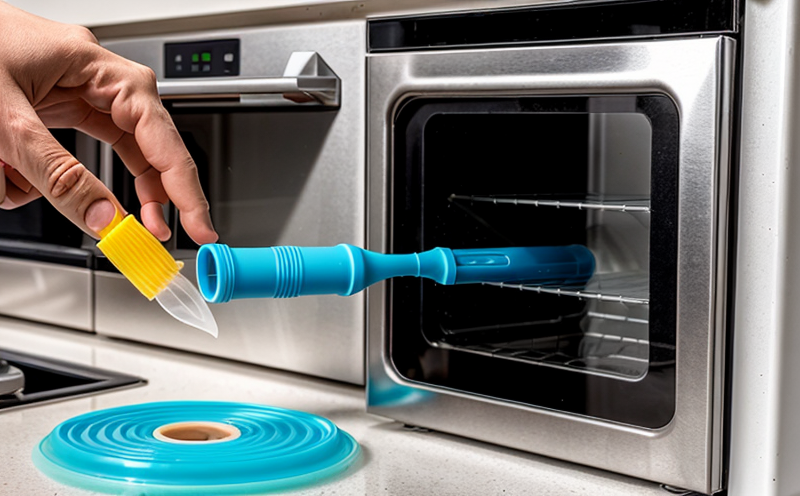ISO 22897 Heavy Metals Testing in Household Plastics
The testing of heavy metals in household plastics is a critical process, especially given the increasing global focus on product safety and consumer health. ISO 22897 specifically addresses the determination of heavy metal content, including lead (Pb), cadmium (Cd), mercury (Hg), chromium (Cr), and others, in plastic materials used in household products such as toys, kitchenware, and furniture.
This service ensures that manufacturers comply with stringent regulatory requirements set by various countries. The process involves the extraction of heavy metals from the plastic samples using appropriate solvents followed by analysis via atomic absorption spectrophotometry (AAS) or inductively coupled plasma optical emission spectroscopy (ICP-OES). These methods provide precise and accurate results that are essential for product safety.
The testing procedure outlined in ISO 22897 is designed to identify potential health hazards associated with the release of heavy metals into the environment or through direct contact. This includes evaluating the leachability of these elements under simulated conditions, such as prolonged exposure to moisture and heat. The results help manufacturers ensure that their products are safe for use by consumers.
The importance of this testing cannot be overstated, especially considering the wide range of household items made from plastics containing heavy metals. For instance, toys designed for children can pose significant risks if they contain excessive levels of lead or other harmful substances. Kitchen utensils and furniture might also leach metals into food or beverages during use.
The laboratory follows strict protocols to ensure accurate results. Samples are prepared meticulously before analysis, ensuring that the testing process adheres to international standards. Post-testing, detailed reports are generated, providing insights into the presence and concentration levels of heavy metals in each sample tested.
To further enhance the reliability of these tests, we utilize advanced analytical equipment capable of detecting even trace amounts of heavy metals. This precision is crucial given that low concentrations can still present health risks if ingested or absorbed through prolonged exposure.
In summary, ISO 22897 Heavy Metals Testing in Household Plastics plays a vital role in safeguarding public health by identifying potential hazards early on during the manufacturing process. By adhering to this standard, manufacturers not only meet regulatory requirements but also demonstrate their commitment to producing safe and reliable household products.
Applied Standards:
| Standard | Description |
|---|---|
| ISO 22897:2015 | Determination of heavy metals in plastic materials used in household products. |
Applied Standards
The testing protocol for ISO 22897 is based on the international standard ISO 22897:2015, which specifies methods for determining heavy metals in plastic materials used in household products. This includes toys, kitchenware, furniture, and other similar items.
Benefits
The benefits of ISO 22897 Heavy Metals Testing extend beyond mere compliance; it offers numerous advantages to manufacturers, regulatory bodies, and consumers alike:
- Safeguarding Public Health: By identifying heavy metal contamination early in the production process, this testing helps prevent the release of potentially harmful substances into the environment or through direct contact.
- Enhanced Consumer Trust: Demonstrating adherence to international standards can significantly boost brand reputation and consumer confidence.
- Regulatory Compliance: Ensures that products meet stringent regulatory requirements set by various countries, reducing the risk of legal action.
- Risk Reduction: Identifying issues early allows for corrective actions to be taken promptly, minimizing potential risks associated with non-compliance.
In conclusion, ISO 22897 Heavy Metals Testing in Household Plastics is an indispensable tool for maintaining product safety and compliance while fostering trust among stakeholders.
International Acceptance and Recognition
The international acceptance of ISO 22897 Heavy Metals Testing in Household Plastics is reflected in its widespread adoption across numerous countries. Here are some key points highlighting its global recognition:
- United States: The U.S. Consumer Product Safety Commission (CPSC) mandates compliance with this standard for certain household products.
- European Union: EU regulations require manufacturers to demonstrate adherence to ISO 22897 when importing or selling plastic products within the region.
- China: Chinese standards often align closely with ISO guidelines, making compliance essential for export markets.
This widespread acceptance underscores the importance of this testing method in ensuring consistent quality and safety across global supply chains.





